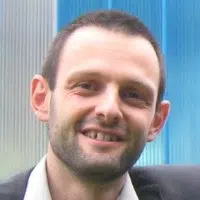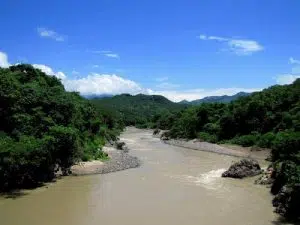A Canadian comparative genocide scholar, a PhD student originally from Venezuela, and two Belgium Architects are working with the Association of Survivors of Chalatenango Massacres to support the Sumpul River massacre survivors build a memorial in El Salvador.
Historical Context
On May 14, 1980, the US-backed Salvadoran military massacred campesinos (peasants) in a tiny hamlet of Las Aradas, in the Department (Province) of Chalatenango. They had taken refuge there, knowing that the government army was initiating a counterinsurgency operation in the area. As the army descended on them, many lay by stone fences and were staffed by helicopters. Many others ran into the Sumpul River to try and make to Honduras (on the other side of the river), where they were shot at by soldiers. Many were gunned down and many others, especially children, drowned. At the end of the action, 600 people were dead. In August 2017, the survivor community formed the Association of Survivors of Chalatenango Massacres and one of their main goals is to build a memorial at the site of the Sumpul Massacre.
International Solidarity
Western University professor and comparative genocide scholar, Dr. Amanda Grzyb and Western University PhD student, Beatriz Juarez, are working in collaboration with the Association, the survivor community, a Salvadoran civil society organization called CRIPDES, and two Belgian architects, Harold Fallon and Evelia Macal, to facilitate the collaborative process of designing and building the memorial. The international team recently met with the survivors to begin the first stage of design consultation.
“As the organization has been conducting its work, they have discovered at least 50 additional cases of massacres and large-scale assassinations across the Province of Chalatenango. While the focus right now is on building the memorial at the Sumpul massacre site, there are many other smaller sites of massacres that also need to be commemorated,” explains Dr. Grzyb.
Beatriz Juarez is from Venezuela studying her PhD in anthropology at Western, she has joined this journey for social justice outside of her PhD work. “We are in this project just for the survivors, just for them. We are working in solidarity with them. It’s not that they need us, but it’s more about international solidarity, and authentic international solidarity. I think it’s important that Western, or any Canadian University, to have this real committee with people in Latin America in general.”
The survivors are directing this project, including the design process, which becomes interesting for the architects. Belgian architect, Dr. Harold Fallon, discusses what his experience working with the community has been to design the memorial.
“This is an enriching experience for us to discuss ideas with the community—because as architects working in Belgium—we are not often used for this group within the public who have specific frame of references, so it has become a very beautiful experience of sharing.”
The Next Steps
Funding initiatives are in the works to launch this summer, as the team strives to earn enough money to afford the construction of the memorial, as well as the operations for at least five years.
In September 2018, this international team will meet again in El Salvador with the survivors and community, in which two Belgian architects, Harold Fallon and Evelia Macal, will display their designs for the project based on previous historical memory workshops.
“Western University is a public institution, and I take very seriously my mandate as a faculty member to do work that is in the public interest and that includes they type of solidarity work supporting the struggles for historical memory in El Salvador,” says Dr. Grzyb.
The team is pushing to have the memorial ready by May 2020—the 40th anniversary of the Sumpul River massacre.













